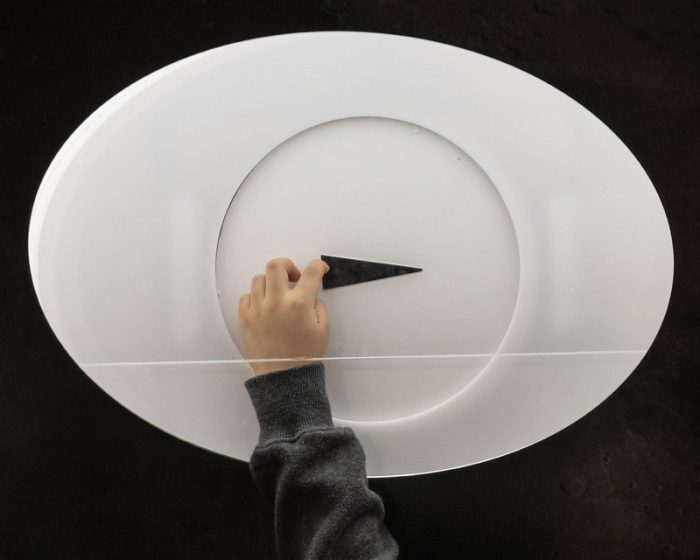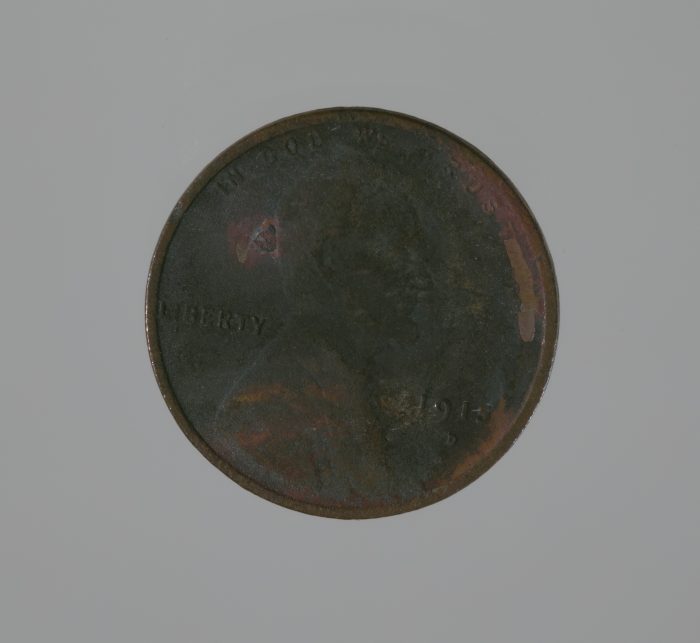A few of my favorite things: Paul Gardullo
Smithsonian staff and volunteers work countless hours in the halls of our museums and research centers, in the field, at the Zoo, in our gardens and facilities. We are privileged to spend time with some of the nation’s most cherished treasures as we go about our duties. Sometimes, these unique experiences find a special place in our own personal stories. Amy Kehs introduces Paul Gardullo and a few of his favorite Smithsonian things.

Paul Gardullo
Museum Curator, National Museum of African American History and Culture
Paul Gardullo is the youngest of six children. He is very close to his nieces and nephews (closer to his own age than his siblings), who happen to be biracial. From a young age, he lived within a family navigating a world with complicated emotional dynamics and challenges of love and estrangement, race, and prejudice that reflected American society in the 1970s. That life experience left a lasting impact on Paul, instilling in him key questions about the nature of identity, family, race, racism, and belonging that would fuel a lifelong commitment to seeking ways to better understand and navigate these questions and find healing on personal and collective levels.
One of Paul’s first and most cherished memories of the Smithsonian is visiting the National Air and Space Museum when it first opened in 1976 with his nieces and nephews. He remembers lifting them to touch the moon rock together. He couldn’t help but wonder what kind of future they might have if they didn’t have to grow up in a world marked by racism. This pivotal moment helped him envision a sense of a possible world of togetherness created a deep memory.
Officially known by NASA as Sample 70215, 84, the moon rock is a dense, aphanitic basalt brought back to earth by astronauts Harrison “Jack” Schmitt and Eugene Cernan during the Apollo 17 mission in December 1972. The sample is from the Valley of Taurus-Littrow. It was cut from the largest rock they collected and was among over 740 rock and soil samples brought back to Earth.

A visitor touches a piece of moon rock at the Smithsonian’s National Air and Space Museum. The touchable moon rock, on loan from NASA, is a slice from a rock collected in December 1972. Photo credit: Smithsonian’s National Air and Space Museum photo by Jim Preston)
It has been on loan to the Smithsonian since the museum’s opening in July 1976 and remains one of only three moon samples in the world that visitors can touch with their bare hands. For decades, people patiently lined up to feel a piece of the moon, a piece of another world. Before the museum closed the gallery for renovations, the rock sat just at the Jefferson Drive entrance of the museum, underneath the famous Spirit of St. Louis and the 1903 Wright Flyer. When renovations are complete, visitors can once again touch the moon rock in the Boeing Milestones of Flight Hall.
Paul’s dedication to history led him to earn undergraduate and master’s degrees at Rutgers University, followed by a Ph.D. at George Washington University. In the early 2000s, he was invited to join the team building the National Museum of African American History and Culture. One of his key contributions to the museum’s opening was the “Power of Place” exhibition. On display inside the exhibit are George Monroe’s pennies. George’s pennies are Paul’s second favorite thing at the Smithsonian. For him, they provide an echo to his childhood experience with the moon rock as they reveal the power, deep meaning and transformational capacity of a very unassuming looking object.

“Riot Penny”
Charred during the 1921 Tulsa Race Massacre, this penny belonged to George Monroe.
Collection of the Smithsonian National Museum of African American History and Culture, Gift of Scott Ellsworth
George Monroe and his family lived on East Easton Street near Mount Zion Church in Greenwood, Oklahoma. On May 31, 1921, when George was almost five years old, his thriving African American neighborhood was set ablaze during the Tulsa Race Massacre. While everything was burning down around him, like many young children who witnessed the destruction of their homes, and communities and loved ones, George sought solace and tried to cope by collecting pennies from the ground that didn’t melt in the flames. He saved them for a lifetime and as an elderly man, he began to give away the pennies to those who he felt he could trust with passing on the story of pain and violence as well as Black Tulsa’s resilience, that the wider world had erased. George Monroe’s pennies have always served as a reminder to Paul of the simple power of collecting, passing stories along as a crucial act of bearing witness and truth-telling as an act of repair and healing.

“Riot Penny”
Charred during the 1921 Tulsa Race Massacre, this penny belonged to George Monroe.
Collection of the Smithsonian National Museum of African American History and Culture, Gift of Scott Ellsworth
Paul’s third favorite thing is the Smithsonian Early Enrichment Center. SEEC is a model museum-based education program with three sites serving children 2 months to 6 years of age. SEEC is the Smithsonian’s beloved early childhood program, and it has cared for the children of SI staff and others for decades. Paul became a Smithsonian employee two months before his second daughter was born. As she went through the program, he watched the impact SEEC had on her and also the rest of the family. Paul loves that his daughter and so many generations of SEEC young learners have experienced the incredibly unique qualities of the Smithsonian collections, people and museums as their classroom for the first years of their lives.

I asked Paul what he likes best about working at the Smithsonian. Paul says that learning from colleagues, the artifacts, and the many collaborations is what he has enjoyed most. The collaborations on his current project, In Slavery’s Wake, has given him a global perspective on the work he is doing. In Slavery’s Wake is an international traveling exhibition and project that explores the history and legacies of slavery, colonialism, and freedom. The exhibition, which opens at the museum in December 2024 before it begins traveling to four continents over four years, features historic artifacts and contemporary artworks from around the world. It’s part of the Global Curatorial Project (GCP), a network of scholars, curators, and community educators who work to shift how people think about, talk about, and represent the history and continuing reverberations of racial slavery and colonialism as well as Black freedom making. The project also includes a new book by the same name.

“Universe of Freedom Making” by Daniel Minter, 2024. Credit: Smithsonian’s National Museum of African American History and Culture. This artwork is among those on display in the exhibition “In Slavery’s Wake: Making Black Freedom in the World”, opening December 13.
Paul Gardullo’s journey with the Smithsonian, from visitor to curator, to parent, has been deeply personal and profoundly impactful. From touching the moon rock with his nieces and nephews to preserving George Monroe’s pennies, Paul’s favorite artifacts serve as touchstones in his mission to honor stories of resilience, family, bearing witness and belonging. For Paul, the Smithsonian isn’t just a workplace; it’s a platform to inspire understanding, healing, and change.
Posted: 11 December 2024
-
Categories:
African American History and Culture Musuem , Feature Stories



